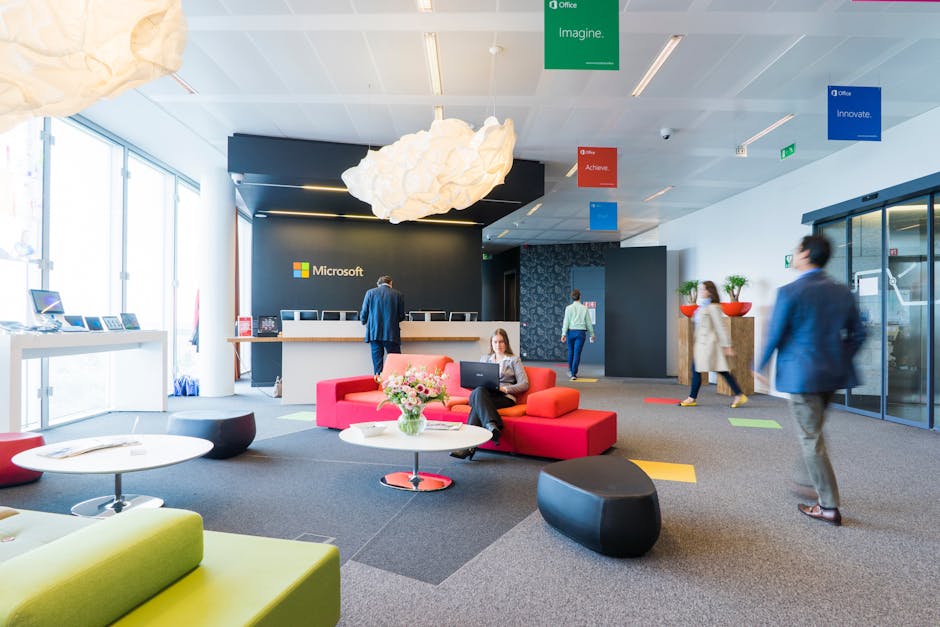Creating a Comprehensive Workplace Visitor Policy: Ensuring Safety and Compliance
“Discover the essential components of a robust workplace visitor policy, including safety rules, security instructions, and best practices for implementation. This guide helps HR and facility managers create a policy that protects employees, ensures compliance, and provides a welcoming experience for guests. ”

The Importance of a Well-Crafted Workplace Visitor Policy
In today's dynamic business environment, a comprehensive workplace visitor policy is essential for maintaining security, ensuring compliance, and creating a positive experience for guests. As organizations navigate the complexities of modern workplaces, having clear guidelines for visitor management becomes increasingly crucial.

Why Your Organization Needs a Visitor Policy
A well-designed visitor policy serves multiple purposes:
- Enhanced Security: By clearly defining who can enter the premises and under what conditions, you significantly reduce security risks.
- Legal Compliance: A structured policy helps ensure your organization meets regulatory requirements regarding visitor management and data protection.
- Consistent Experience: Standardized procedures create a professional and welcoming atmosphere for all visitors.
- Operational Efficiency: Clear guidelines streamline the check-in process, saving time for both visitors and staff.
Key Components of an Effective Visitor Policy
Visitor Types and Access Levels
Your policy should clearly define different categories of visitors and their respective access privileges. Common visitor types include:
- Clients and customers
- Vendors and contractors
- Job candidates
- Employee guests
- Delivery personnel
For each category, specify which areas of the workplace they can access and any escort requirements.
Check-In and Check-Out Procedures
Outline a step-by-step process for visitor registration, including:
- Required identification
- Sign-in methods (digital or paper-based)
- Badge issuance
- Host notification
Don't forget to include check-out procedures to ensure all visitors are accounted for at the end of their visit.

Safety Rules and Emergency Procedures
Workplace safety is paramount. Your visitor policy should include:
- General safety guidelines
- Emergency evacuation procedures
- Restricted areas and hazard warnings
- Personal protective equipment requirements, if applicable
Confidentiality and Non-Disclosure Agreements
For businesses dealing with sensitive information, consider including:
- Confidentiality clauses
- Non-disclosure agreement requirements
- Rules regarding photography or recording on premises
COVID-19 and Health Safety Measures
In light of recent global health concerns, incorporate relevant health and safety protocols:
- Health screening questionnaires
- Temperature checks
- Mask requirements
- Social distancing guidelines
Implementing Your Visitor Policy
Communication and Training
Ensure all employees, especially those in reception and security roles, are familiar with the visitor policy. Consider:
- Regular training sessions
- Easy-to-reference guides at reception desks
- Digital reminders and updates
Technology Integration
Leverage modern workplace technology to streamline visitor management:
- Digital check-in systems
- Automated host notifications
- Visitor badge printing
- Integration with access control systems
Regular Review and Updates
Your visitor policy should be a living document. Schedule regular reviews to ensure it remains:
- Compliant with current regulations
- Aligned with your organization's evolving needs
- Effective in addressing new security challenges

Best Practices for Policy Enforcement
- Consistency is Key: Apply the policy uniformly across all visitors and employees to maintain fairness and effectiveness.
- Visitor Education: Provide clear, concise information to visitors about your policies before their arrival.
- Feedback Loop: Establish a system for collecting feedback from visitors and employees to continuously improve your processes.
- Escalation Procedures: Define clear steps for handling policy violations or unusual situations.
Conclusion: Balancing Security and Hospitality
Creating a comprehensive workplace visitor policy is a delicate balance between maintaining security and providing a welcoming environment. By thoughtfully addressing all aspects of visitor management, from safety rules to check-in procedures, organizations can create a secure, efficient, and positive experience for everyone who enters their premises.
Remember, the goal is not just to implement rules, but to foster a culture of safety and professionalism that reflects your organization's values. With a well-crafted visitor policy in place, you'll be better equipped to manage risks, ensure compliance, and create lasting positive impressions on your guests.
By investing time and resources into developing and maintaining a robust visitor policy, you're not just protecting your workplace – you're enhancing your organization's reputation and operational efficiency. In today's fast-paced business world, that's an investment that pays dividends in safety, compliance, and guest satisfaction.